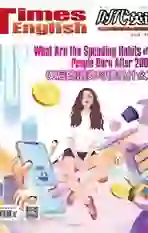跟踪导练(一)
2021-03-18
閱读理解
A
If youre dreaming of visiting one of those picture-perfect European towns filled with old-world attractiveness and scenic beauty, here is a look at some of the most beautiful small towns in Europe.
Manarola
Manarola, Italy, is filled with rainbow colored homes carved right into a wall of stone along the Mediterranean coast. This fishing town is famous for its unbelievable wine, and the paintings. There are no cars here, no traffic lights, and no traffic noise. You can drive to Manarola, but youll have to park just outside the town and then take a shuttle bus or walk in on foot.
Garmisch-Partenkirchen
Garmisch-Partenkirchen, Germany, is a fascinating mountain town. Once two separate towns, one Roman and the other Teutonic, the 1936 Winter Olympics forced them to combine, though the two sides still have different characters. The town dates back to 15 AD, filled with narrow, cobblestoned streets lined with historic three-or-four-storey buildings painted with local and religious (宗教的) scenes.
Marsaxlokk
The energetic trading port of Marsaxlokk, Malta, was built in 900 BC. Today, this pretty town is the main supplier of fish to the island nation that sits in the Mediterranean Sea. It has no modern buildings to ruin its appeal. With such quiet surroundings, including the traditional luzzus (fishing boats), its a particularly attractive place to visit.
Portmagee, Ireland
In a country filled with beautiful towns, Portmagee is a standout, sitting on the southwest coast of Ireland. This postcard perfect seaside fishing town has a row of brightly colored buildings along with a rich and colorful history. At the Bridge Bar, youll find live music many nights of the week along with fantastic food and a fine pint of beer.
1. Which town does not allow tourists to go sightseeing by car?
A. Manarola. B. Portmagee.
C. Marsaxlokk. D. Garmisch-Partenkirchen.
2. What is special about Marsaxlokk?
A. Religious scenes.
B. Wine and paintings.
C. Fish and old buildings.
D. The rich history and live music.
3. What does the underlined word “appeal” in Paragraph 4 probably mean?
A. Trade. B. Attractiveness.
C. Background. D. Development.
4. Manarola and Portmagee are good choices for tourists who ___ .
A. prefer enjoyment in an old coastal fishing town
B. have special interest in traditional fishing boats
C. want to stay on a Mediterranean island
D. need a good rest in a mountain town
B
There are some places you know all about the details of the buildings and history. But still, one day, if you really visit these places, they do something to you. They may not be like what you thought they would be. The Red Square in Moscow is one of these places.
I got there in the late evening. After arriving at the Rossiya Hotel, I took a walk on the Red Square. I found the square was in fact not that big, much smaller than I had expected. Maybe it was because I came from Beijing just a couple of weeks before, and I was comparing it with the really huge Tiananmen Square.
One of the following days I visited Lenins Mausoleum (列寧墓). As soon as you walk inside the mausoleum, you have to walk down some stairs, where there is no light. I even didnt see the Russian security (安保) men standing on the sides, but I knew quickly enough they were there, because when I said to my friends, “It is dark here. I cannot see...”, they reminded me immediately about the “complete silence” rule!
Many Russian cities have a Kremlin, but the one in Moscow is always referred to as “the Kremlin”. In present times, inside the Kremlin walls, you can find a historic museum, different traditional churches, Ivans clock tower, the current government buildings and other modern buildings. One rule that our guide made clear quickly was that it is not allowed to walk anywhere but on the pavement (人行道)! If you get off the pavement, you will be warned by the security officers. Also when you stand too long in one place, they also tell you to move on.
All in all, this trip is very great! It makes me well understand the life of the Russian.
5. What probably was the authors first impression of the Red Square?
A. It was much smaller than Tiananmen Square.
B. It was less crowded than Tiananmen Square.
C. It was very beautiful in the evening.
D. It was popular among foreigners.
6. Visitors to the Lenins Mausoleum are usually required to
___ .
A. keep quiet B. bring a flashlight
C. stay there not long D. speak to the security men
7. What can we infer from Paragraph 4 about “the Kremlin”?
A. Visitors can explore everyplace there freely.
B. The security officers there are very friendly.
C. The president is glad to receive visitors there.
D. It is a combination of Russias past and present.
8. Where does the text most probably come from?
A. A tour package. B. A travel magazine.
C. A book review. D. A news report.
